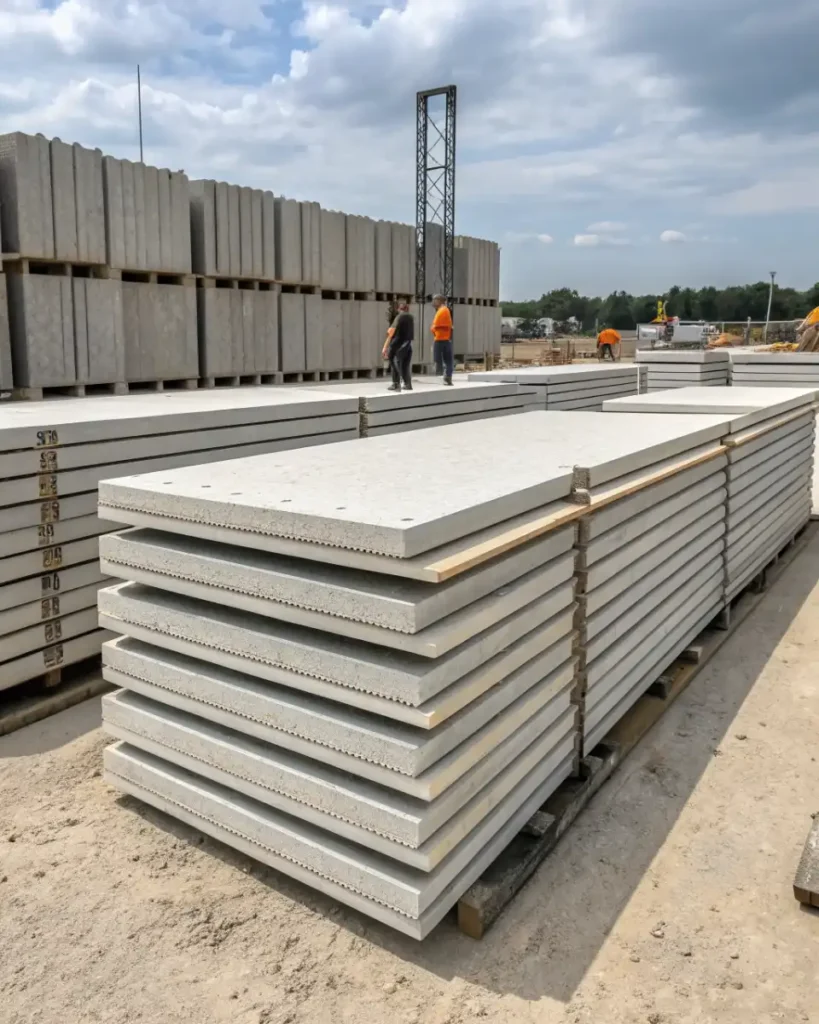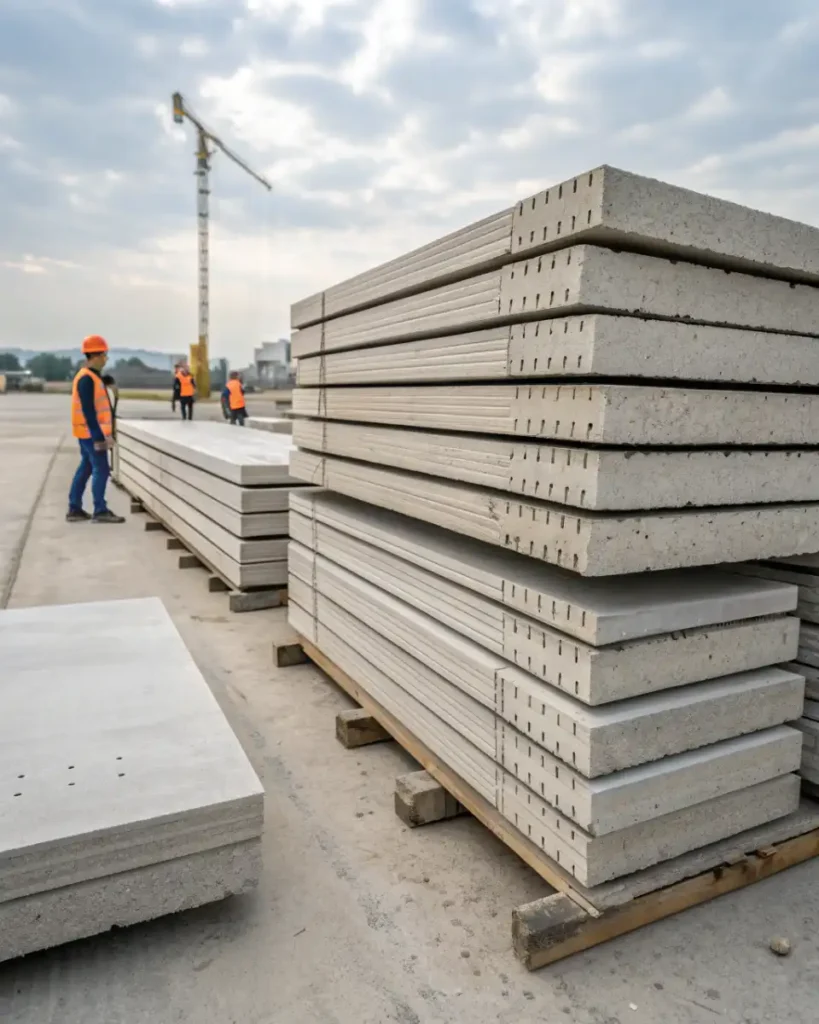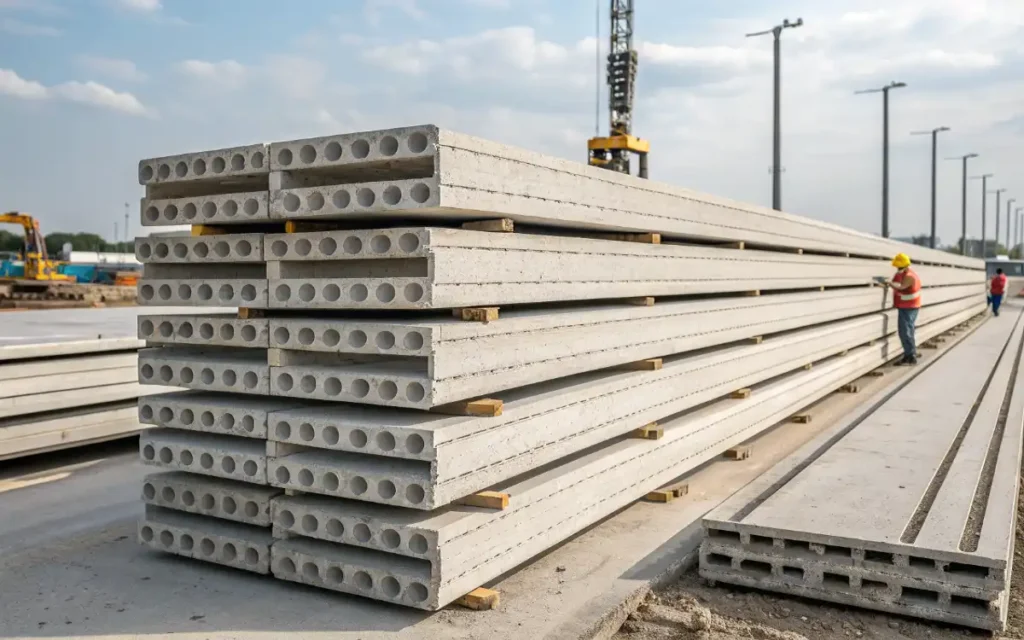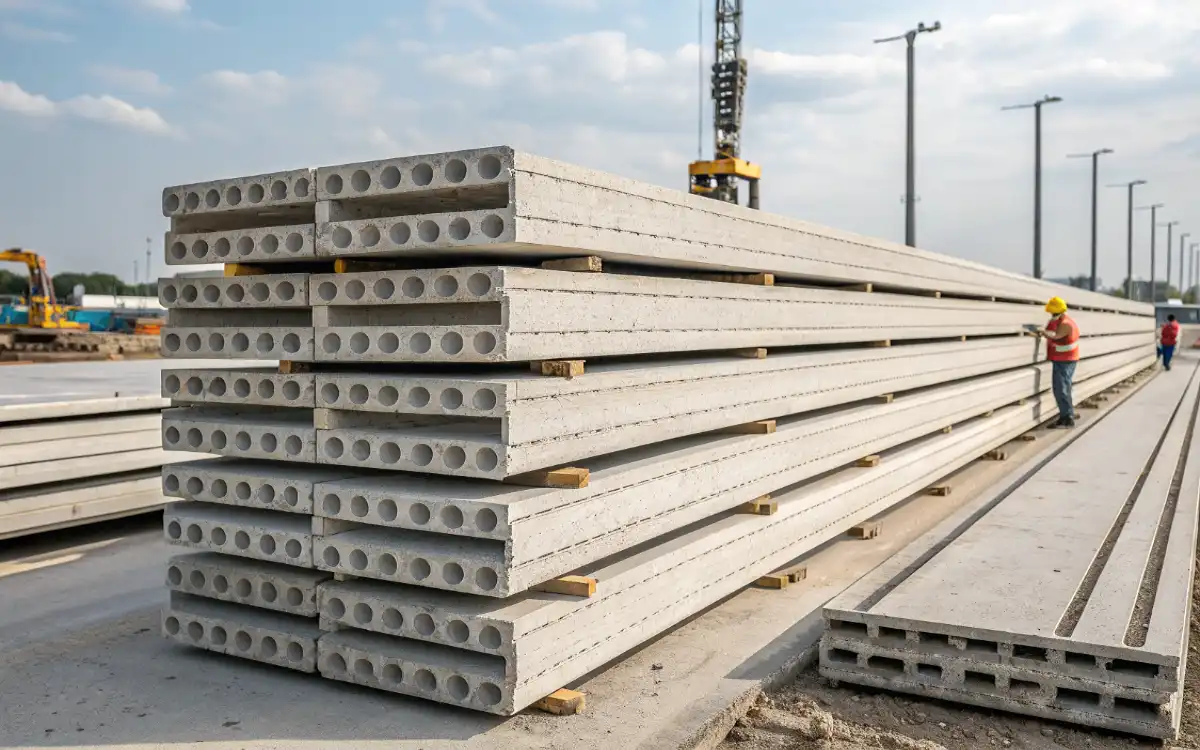Introduction: A new phase in construction
Joisted buildings have become a mainstay in the construction industry due to their speed, strength, and efficacy. Urbanization and tight construction timelines have led builders and developers to use more and more precast concrete panels.
Modern architecture applications emphasize the advancement in precast as of 2025. This article will articulate the advancements in precast concrete panels, their role in the future of construction, and their benefits in future modern architecture applications.

What is precast concrete panels?
Precast concrete panels are precast factory-ordered concrete slabs, that are produced in specific forms and sizes, and are assembled in on-site construction.
Poured concrete on-site is a traditional construction practice, and replacing it uses positioned concrete forms, and eliminating extensive on-site shaping and curing, and thus are of diminishing quality.
The Efficiency of Precast Concrete Panels in Contemporary Construction:
Precast concrete slabs provides:
- Speed: Panels are produced while site are simultaneously being prepared, which provides a construction time reduction of 40-50%.
- Longevity: Precise curing in a factory and varying of slabs will provide extreme strength and varying durability against extreme weather.
- Financial benefits: Precast reductions time of labor on site and wasting of resources, lowers the cost of a project.
- Eco-Friendly: Precast slabs provide the optimal construction materials by replacing wasting slabs.
Technological Innovations in 2025
· Smart Precast Concrete Solutions
Reading about some of the innovations coming within the next few years will excite most people; others, however, may think about it from a more structural engineering mindset. The truly unique innovation of smart technology in precast concrete panels will take the most center stage.

Panels with embedded technology will allow the monitoring of structural health in real time. Stress, temperature, and humidity are a few of the measurable parameters. Issues can be detected a while before they occur, proactive maintenance can be scheduled, and life and safety can be improved.
· 3D Printing and Custom Designs
Precast manufacturing has recently adopted 3D printing which, in turn, allows the manufacturing of truly unique and complex architecturally-designed structures. Designs that were complicated, costly and time-consuming are easily and quickly created which allows for designers and builders to think outside the box and be more productive.
· Advanced Quality Control with BIM Integration
As the Building Information Modeling (BIM) feature of a software grows, the construction side of the software grows as well. This is called vertical integration. In this case, it helps construct precast concrete panels that are designed to fit within the overall structure of a building in a seamless manner, thus reducing errors and need for rework to be done.
Applications of Precast Concrete Panels
Precast concrete panels are widely applied in:
- Masonry walls Structural elements such as beams and slabs Facades and cladding systems Infrastructure projects such as bridges and tunnels
- Modular housing and commercial construction is where these panels become extremely useful as quick turnaround time and durability are extremely critical.

Traditional Concrete vs. Precast Concrete Panels
| Feature | Traditional Concrete | Precast Concrete Panels |
| Manufacturing | On-site casting | Factory-controlled casting |
| Construction Speed | Longer curing times | Rapid installation on site |
| Quality Control | Variable by site conditions | Consistent and precise quality |
| Design Flexibility | Limited by formwork | Enhanced by 3D printing |
| Labor Requirements | High on-site labor | Reduced on-site labor |
| Monitoring | Manual inspections | Embedded smart sensors |
| Sustainability | Moderate waste | Optimized material use |
Benefits For Construction Professionals
Safety improves because precast concrete panels lessen the need for more complicated onsite labor. They fine-tune dial down the need for heavy scaffolding and formwork.
The long-lasting nature of these constructions also minimizes prolonged maintenance. For BIM managers and architects, having these panels simplifies coordination and improves the accuracy of architectural design.
Conclusion
Embracing Precast concrete panels displays a transformation in construction methods using innovative principles of speed, quality, and sustainable practices.
Precast panels respond to construction challenges predicted for 2025 and the subsequent years. These adapt to the pace of modern construction, offering strong, durable, and sustainable solutions for buildings, increasing environmental awareness.
For Repair and Services
1924 W Edward Ln, Milwaukee, WI 53209, United States
Phone: +14142855933
Email: [email protected]




